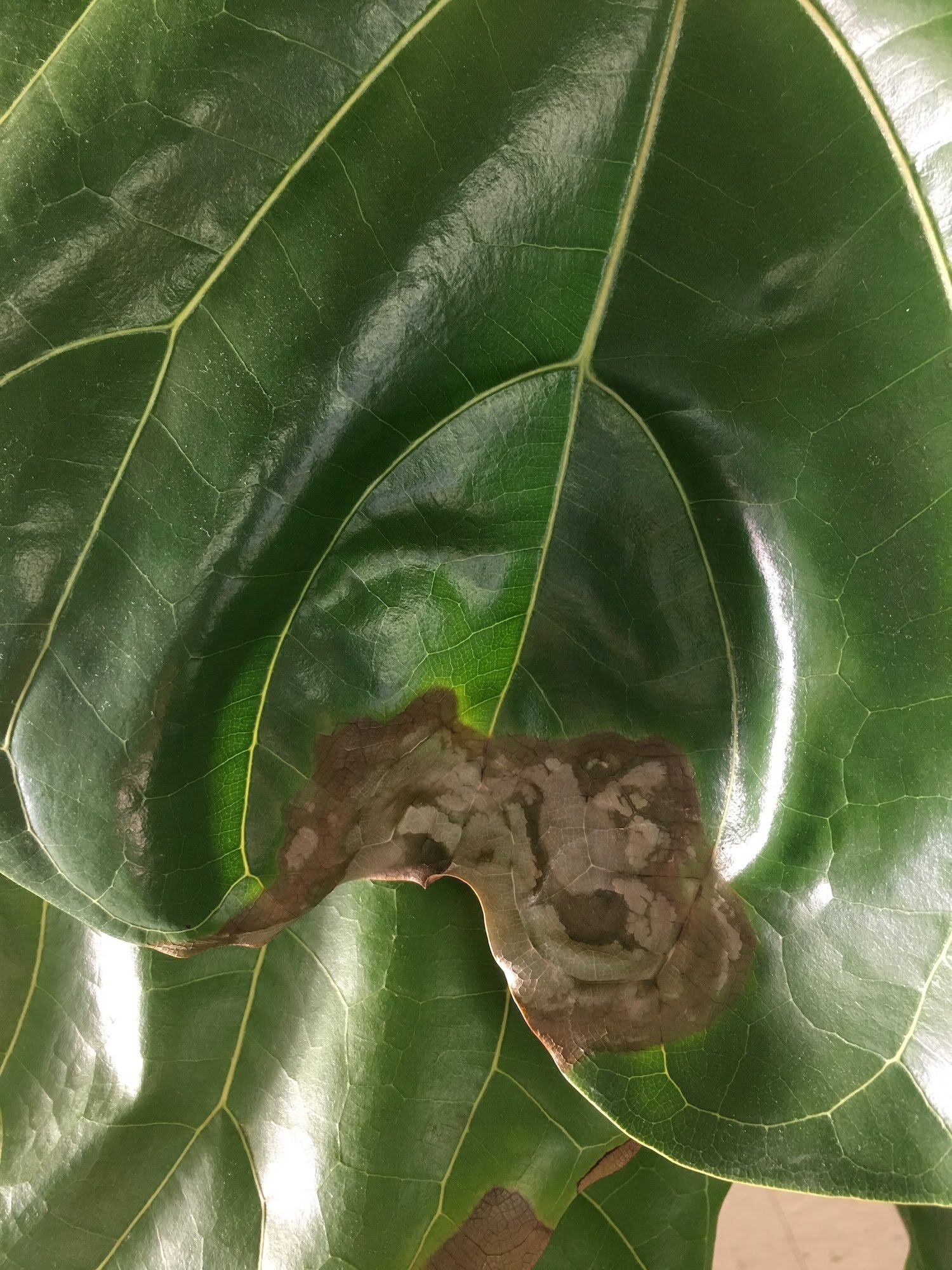Top 6 Problems with Fiddle Leaf Fig Trees
What are signs of an unhealthy Fiddle Leaf Fig?
Fiddle Leaf Figs are notoriously finicky plants. From brown spots to dropping leaves, there are a few common ailments of this plant that can sicken it, or worse, quickly lead to its demise. Keeping an eye out and catching them early is key to keeping your plant happy and healthy. Look for these signs of a potentially unhealthy Fiddle Leaf Fig.
Brown spots on the leaves
Fiddle Leaf Figs are incredible prone to browning on their leaves. While minor markings here and there are nothing to worry about, brown spots that begin to develop and spread should be looked into.
Unfortunately it can be quite difficult to diagnose the issue, as most brown spots on Fiddles are caused by two opposing forces: over watering or under watering. Here’s how to tell the difference:
Brown spots that start in the middle of the leaf and spread outwards are likely caused by overwatering, which in turn causes root rot. Root rot is a fungal infection that will spread to the leaves and eventually kill your plant. If your plant has root rot, you will need to repot, sooner rather than later. Remove the plant from its soil, thoroughly wash the roots and remove any that are brown or mushy. Afterwards, repot in fresh soil with proper drainage and cut off the affected leaves.
Are your Fiddle’s brown spots are starting on the edge of the leaves and spreading inward? This is likely caused by the plant being overly dry. Give your Fiddle a good shower, and also make sure it’s not placed too close to any air vents or heaters, that will likely dry the plant out faster than what’s ideal.
Natural Plant Food
Nourish your plants with this specially-formulated organic liquid plant food. Our Boost Vitaminé is made with potent nutrients from nature to help your plants grow and thrive all year long.
$24
Finally, brown spots may appear randomly due to trauma. A plant can go through trauma simply by moving homes (i.e. changing environments). If your plant has just one or two damaged brown leaves, cut them off at the stem and give your plant time to recover.
The new growth is smaller than the older leaves
New growth is always a great sign of a healthy plant, and if the leaves on your Fiddle grow large and strong, that means your plant is thriving.
However, if the new leaves grow in small and stunted, it could be a sign that your plant is lacking in nutrients. If it’s been years since you repotted, consider repotting to give your plant fresh soil, or simply fertilize your plant in the spring and summer to give it the extra nutrients it needs.
Dropping leaves
Fiddle Leaf Figs can sometimes seem to drop leaves at the drop of a hat. One leaf here and there is nothing to worry about, but if your plant has lost multiple leaves within a few days, you will need to act fast to save the tree. Once again, the most likely causes of leaf drop in Fiddle Leaf Figs is under watering or over watering. So how can you tell the difference? Look at where the leaves are falling from the plant: if the older leaves (towards the bottom) are going first, it’s likely over watering. However, if the leaves are falling off from all over the plant, it’s likely under watering. Here are more ways to tell the difference.
Leaves turning yellow
Are you seeing yellow leaves on your Fiddle Leaf Fig? There are a few possible causes:
Not enough light. Fiddle Leaf Figs need as much bright indirect light as possible. A bit of direct sunlight is fine too, but avoid areas of medium or low light. Also keep in mind that a Fiddle that does not get enough light is more prone to over watering.
Poor nutrition. Your Fiddle could show yellow leaves due to a lack of nutrients in the soil, and you may consider feeding your plant with liquid fertilizer
Pests. Fiddles may also show yellow leaves if they are suffering from an insect infestation. If you suspect this is the case, thoroughly examine both the top and bottom sides of the leaves for any possible bugs.
Stunted or slowed growth
Healthy Fiddles usually grow new leaves every four to six weeks during spring and summer. Growth tends to be in spurts, and it’s possible to see your plant grow several new leaves in a matter of just a few days or weeks! In the winter, it’s normal not to have any new growth. If you aren’t seeing the type of growth that’s normal with this plant, once again, it may be in need of fresh nutrients in the form of a good plant fertilizer .
Dirty or dusty leaves
When was the last time you cleaned the leaves of your plant? Plants not only absorb sunlight through their leaves, but they also breathe through them too! If your plant has a layer of dust on its large leaves, it won’y be able to perform either of these functions as well as we’d like. Cleaning the leaves on your Fiddle Leaf Fig every few months is a great way to keep the plant healthy, glowing, and vibrant. Here you can read about a few different ways to clean your Fiddle Leaf Fig.
While Fiddle Leaf Figs can be relatively low maintenance plants, they are known to be pickier than most. Keep a regular watering schedule, fertilize in the spring and summer, and above all, make sure your plant is getting the light it needs throughout the year (yes, this may mean moving it in the winter!). Keep an eye out for any of these signs, as catching them early is key to keeping your plant looking fresh and feeling good!
This post was adapted from the Fiddle Leaf Fig Plant Resource by expert Claire Akin. Head to their website to learn more about caring for the Fiddle Leaf Fig.
1 TO 1 VIDEO CALL WITH AN EXPERT
Yellow leaves? Worried about watering or struggling with incorrect lighting? Book a call and get truly personalized support for all your plant-related needs.





